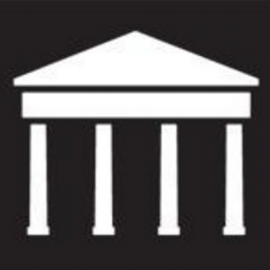By Solen Roth
Just back from a four day seminar at the Otsego Institute at the Fenimore Art Museum in Cooperstown (NY)! A small group of junior professionals and graduate students in art history and anthropology from Canada and the US were invited to present on their current work and discuss some of the key issues in their field with peers and faculty.
This year’s theme was “Collecting, Curating, Understanding” and many of the discussions focused on the relationship between academia and the art market – a relationship, it was argued, that is inevitable and has very real implications but that academics tend to ignore for fear of facing ethical dilemmas or being explicitly implicated in putting prices on material culture.
The Otsego Institute Board is primarily composed of university professors (Janet Catherine Berlo of the University of Rochester, Aldona Jonaitis of the University of Alaska, Ruth Phillips of Carleton University, Jolene Rickard of Cornell University) and museum professionals (Eva Fognell of the Fenimore Art Museum, Joe Horse Capture of the Minneapolis Institute of Arts, Evan Maurer of the Minneapolis Institute of Arts, Steven LeBlanc of the Peabody Museum of Anthropology and Ethnology). One aspect that makes this seminar stand out, however, is the involvement of private collectors and art dealers. Collector, art dealer and Otsego Board Member Jonathan Holstein, art dealer and collector Eugene Thaw, and art dealer Donald Ellis spoke about their respective experiences with objects and the art market. Their presence and contributions were particularly crucial to the exploration of this year’s theme.
Students were invited to think about how they might navigate their direct or indirect implication in the art market, and their various potential interactions with donors, auction houses, collectors and dealers in the course of their careers. The organizers were careful to point out that they did not wish to promote collectors or art dealers, but that they thought it valuable for students to be exposed to points of view and kinds of expertise that are rarely part of graduate school programs. A presentation by Gaylord Torrence of the Nelson-Atkins Museum of Art about the display of Native American materials as fine art as a means to honour Native peoples and a public lecture by Nuu-chah-nulth oral historian Chuuckkamalthnii about thliitsapilthim (ceremonial curtains) that challenged some art historical and anthropological approaches to these items - including that of them being “art” – gives an idea of the variety of perspectives that were expressed over the course of the seminar.
The following is but a brief overview of some of the discussions that occurred during these four days that I think might be of interest to fellow IPinCH-ers.
Questions of intellectual and cultural property were brought up a number of times during the seminar. After I presented my doctoral research on the Native Northwest Coast giftware industry, we discussed the absence of legislation regulating the sale and labeling of First Nations-style art in Canada, as well as some of the limitations of the Indian Arts and Crafts Act in the US, such as galleries being given the thorny task to police artists’ identities. It is interesting to note that as far as the Northwest Coast art market is concerned, I have been repeatedly told that non-Native artists’ work are much more prevalent in Seattle than they are in Vancouver (the two hubs for this market North and South of the border). It would be interesting to gain understanding of the ways in which legislation or absence thereof relates to this apparent paradox.
During another conversation, we briefly discussed a Native community’s concerns over the use of collectively owned images by a commercial blanket company. The legal action they had hoped to conduct was halted upon learning that the company had gained approval for their use from an individual of Native ancestry. This example points to the tension between collective and individual identity, rights and ownership, not an uncommon issue when it comes to legal approaches to Indigenous intellectual property.
The role played by scholarly publications in the value given to objects on the art market came up on several occasions. Article illustrations, exhibition catalogues or surveys of the work of a particular artist can be used to authenticate works circulating on the market and can create “notoriety” for a particular piece, which goes hand in hand with its market value and the value of objects like it. This discussion echoed what I learned during my Masters research on the non-Western art market in Paris, where lists of publications and exhibitions form an integral part of an object’s pedigree or provenance, along with the names of the dealers and collectors in whose hands it has transitioned.
It was also interesting to hear perspectives on repatriation coming from active participants of the art market, as it is so often discussed in relationship to museums and public collections. For instance, it was mentioned that NAGPRA, while legally binding only for federally funded museums, has also affected private collectors. For example, it has altered their ability or desire to donate objects to museums when these are subject to repatriation. Some have chosen not to acquire such pieces at all, while those who already own them have occasionally returned the objects directly to their communities of origin, rather than have them repatriated via a museum or divesting themselves of these objects through international auctions. The former initiatives are encouraging, and point to the importance of museums, academics and communities engaging in dialogue with art dealers and collectors (and vice-versa) about issues such as repatriation, its benefits and its challenges.
A four day seminar is of course not enough to address all of these important issues in the depth that they deserve, but there is no question that this has been a very formative experience for me. I hope to have time in the near future to delve back into my Masters research on the Parisian non-Western art market to think through my material in the light of what I have learned at the Otsego Institute. In the meantime, I will mine this experience for the more pressing project at hand: my dissertation on the Native Northwest Coast giftware market. A few more interviews, a summer’s worth of transcriptions, and then…. Writing!






